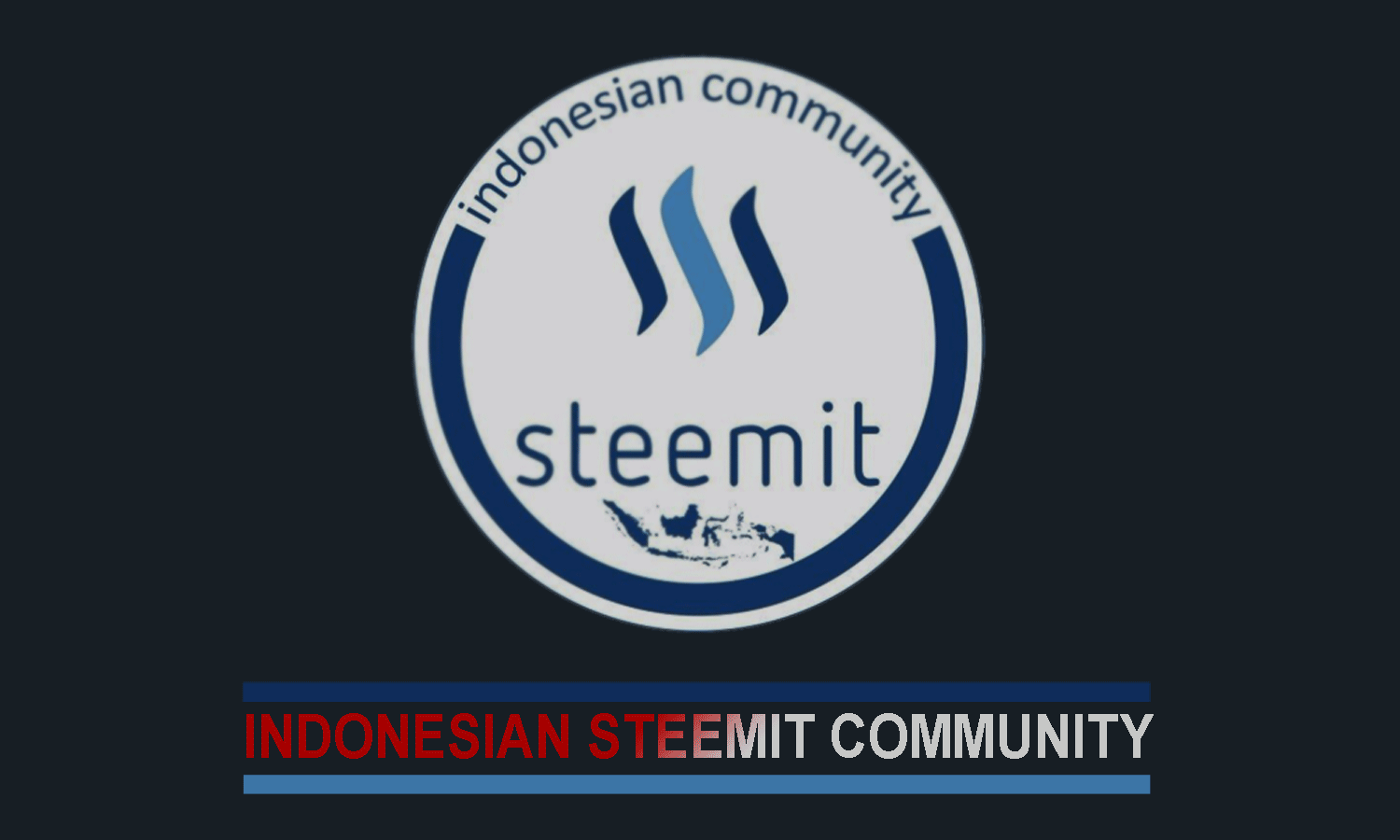Bentenan, Traditional Woven Fabrics From Minahasa Tribe [BILLINGUAL]
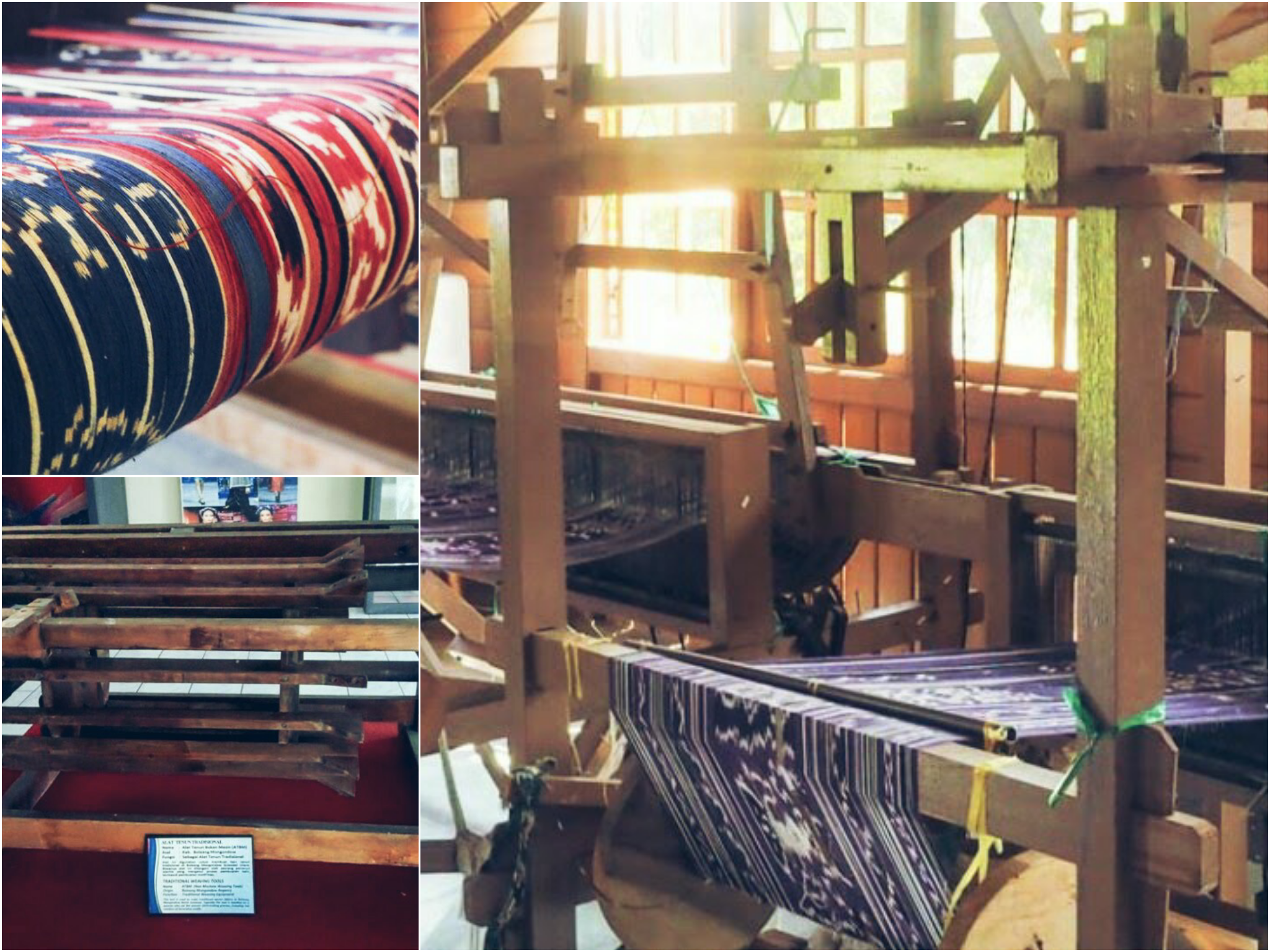
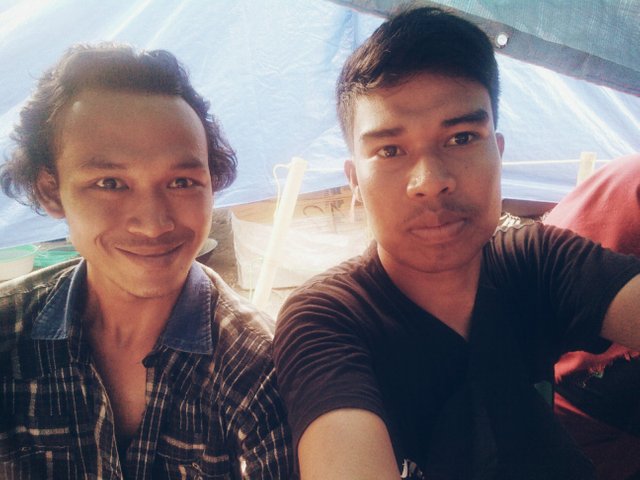
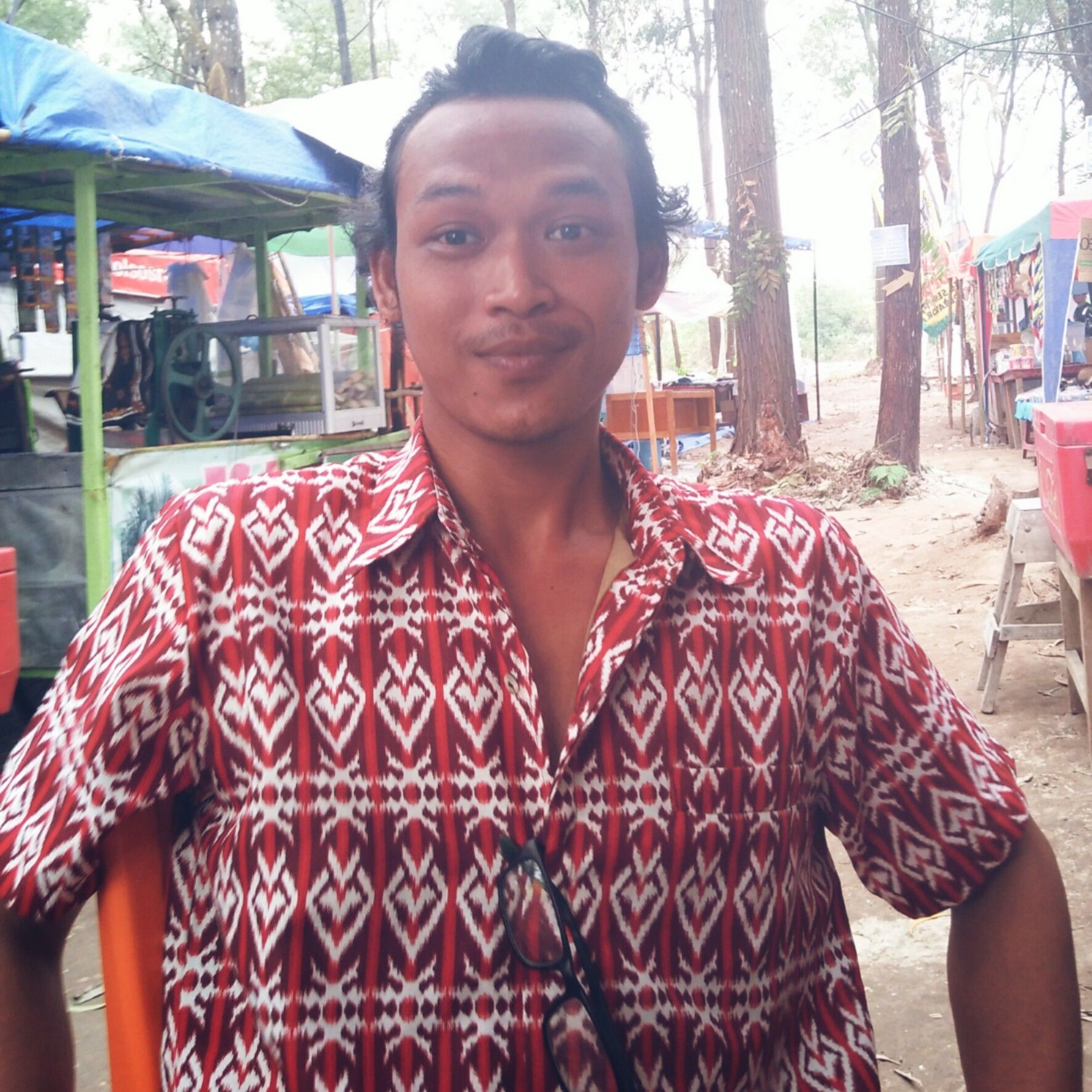
I am very happy to visit a cultural festival in Riau. On my way to Riau, I met a young man from Manado. At that time he was wearing a typical outfit from his area. I had time to take pictures with him, in addition I also asked many things about the clothes that he used it. In a very short time we felt familiar. He tells many things about culture, and traditional dress from his region. No half-hearted yes also directly explained about the clothes he was wearing it. She has a large collection of photographs about the fabric. He also told me about one of the traditional cloth production sites in his place. It seems like batik in Java, songket in South Sumatra, and ulos in North Sumatra, in North Sulawesi, especially the Minahasa people familiar with the popular traditional woven cloth called Bentenan fabric. The existence of this cloth is quite controversial because it has disappeared for about 200 years from the land of Minahasa. The true Bentenan refers to an island and a bay on the coast of Southeast Minahasan Regency. In the past, around the 15th to 17th centuries these waters were the seaports and transit ports of the sailors before they headed to Ternate.
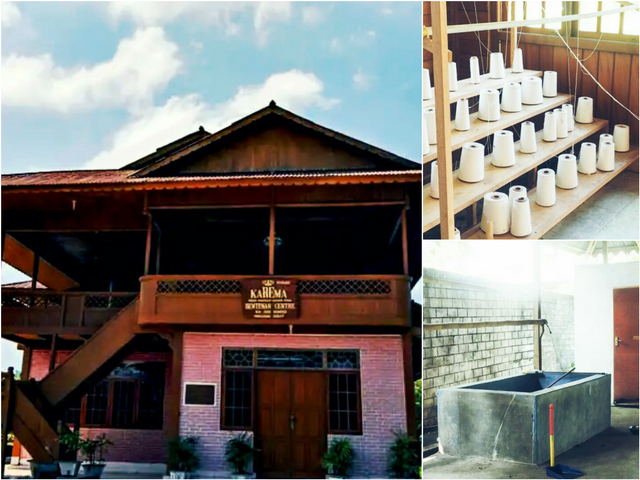
And around the 1900s Bentenan fabric was found for the first time in the area, precisely in the Village Bentenan, Ratahan, South Minahasa. The existence of Bentenan cloth is inseparable from the cultural and historical activities of the Minahasa tribe. Around the 7th century Minahasa society has known the fabric of bark called Fuya, which comes from the bark of Lahendong tree and Sawukkuow tree bark. In addition they also recognize pineapple fiber called Koffo and as well as bamboo called Wa'u. The naming of Bentenan itself comes from the name of the region where the main port in North Sulawesi is located, Bentenan. From this harbor the first time Bentenan fabric in export (15-17 century) to the outside of Minahasa. So even though the fabric is made in Tombulu, Tondano, Ratahan, Tombatu, and other areas in Minahasa the name remains known as Bentenan. In the next development, after interacting with the sailors who stopped and settled, Minahasa people began to recognize cotton, from this cotton material then they make clothes which became known as the Bentenan Woven Cloth. In those days Bentenan fabric has become the best quality fabric in the world. For the people of Minahasa, Bentenan cloth is a special cloth because there are certain rituals before weaving. Another specialty is that this cloth plays a major role in the circle of life of Minahasan people, such as birth, marriage, and death. When a newborn is covered with a cloth, when married Benetanan cloth can serve as a dowry and when it dies the cloth is used to wrap the corpose.
Due to the complicated and time-consuming manufacturing process, these fabrics are only used by certain people and certain occasions. Like the leaders there are (Tonaan), religious leaders / sukt (Walian) in customary uparaca and religious ceremonies. Kain Bentenan also has become a symbol of social status and become part of the principle of life that dilakoni Minahasan society. In fact, Minahasan people believe that when they fight and use Bentenan cloth as a belt it will be able to break the opponent's attack, in other words the person wearing a Bentenan cloth belt will be immune to the opponent's weapon. This is certainly in accordance with the stories of previous people that the making of Bentenan cloth is very sacred. Another specialty of Bentenan fabric is its elaborate manufacturing technique. Woven fabric is woven by double-bond technique, the yarn that forms the width of the fabric (the feed) is called Sa'lange and the elongated yarn (lungsi) is called Wasa'lene. This double-bond technique is a technique of ikat weaving with a high degree of difficulty, very rarely this technique is used in other areas. Motives that can be created from this technique will be delicate, complicated and very unique. Bentenan fabric is woven without interruption to produce a cylindrical cloth or tube.
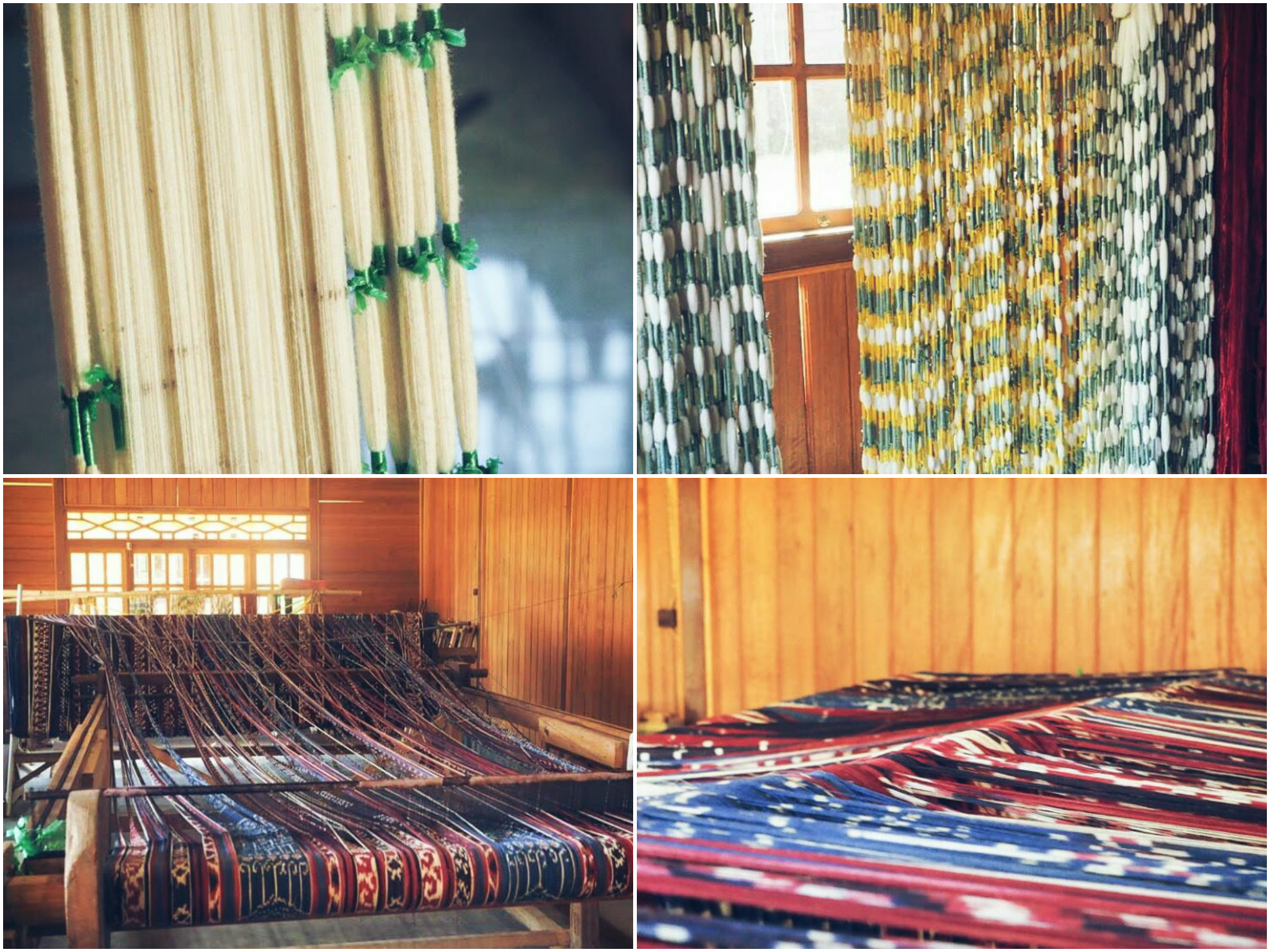
After the Dutch entered the Minahasa, there were many socio-cultural changes including the disappearance of traditional ritual ceremonies, resulting in the gradual use of woven fabrics increasingly rare and eventually disappearing. So from that moment the fabric weaving habit stalled. The cloth of the crops had disappeared for a long time. Even supposedly he said many own minahasa people who do not know about the existence of this high quality fabric. All around the world it is estimated that only 5 pieces of cloth are stored in the Voor Land en Volkenkunde Museum, Rotterdam, The Netherlands and a sheet again in the national museum of Jakarta. According to the story of fabric that is in this museum is a gift from a Dutch observer. The fabric is a rare collection, thought to have originated from the Minahasa Tombulu region and entered Batavia in 1885. The cloth was called Rinegetan Pasolongan with a round shape like a tube that actually consists of 3 pieces of fabric sewn together. Sa'lange and the elongated yarn (lungsi) is called Wasa'lene. This double-bond technique is a technique of ikat weaving with a high degree of difficulty, very rarely this technique is used in other areas. Motives that can be created from this technique will be delicate, complicated and very unique. Bentenan fabric is woven without interruption to produce a cylindrical cloth or tube.
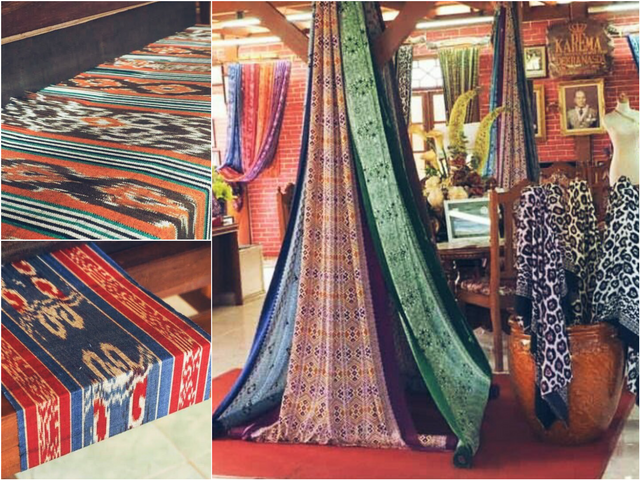
In the coloring process, Bentanan fabric uses natural dye derived from plants grown in the region. blue or green color is usually obtained from the tree Taun, then when added with water whiting, then the blue color will turn black. Shrub Lenu (morinda bractenta) for yellow and when mixed with lime water will be red. Lelenu (peristrophe tinctoris) for red, Sangket (homnolanthus paulifolius) the skin produces black color. Bentenan fabric has seven motifs namely Tonilama (woven from white thread, colorless and white cloth), Sinoi (woven with colorful and striped thread), Pinatikan, woven with mesh and hexagon pattern, the first woven in Minahasa. Tinompak Kuda (weaving with various repetitive motifs), Tononton Mata (weaving with human picture), Kalwu Patola (weaving with Patola Indian weaving motif) and Kokera (weaving with colorful flower embroidered beads). Bentenan woven fabrics of the highest value used for traditional ceremonies is Tinonton Mata symbol of the first ancestors of the Minahasa people namely Toar-Lumimuut. While the high value Bentenan woven fabric as a medium of exchange is the motif of Patola Indian decoration, such as Kaiwu Patola motif. Kaiwu Patola Motif, Tinonton Mata, Tinompak Horse that can be produced again.
[INDONESIA]



Saya sangat senang bisa mengunjungi sebuah festival budaya di Riau. Dalam perjalanan saya ke Riau, saya bertemu dengan salah seorang pemuda yang berasal dari Manado. Waktu itu ia mengenakan pakaian khas dari daerahnya. Saya sempat befoto dengan dia, selain itu saya juga bertanya banyak hal tentang pakaian yang dia gunakan itu. Dalam waktu yang sangat singkat kami merasa menjadi akrab. Dia menceritakan banyak hal tentang budaya, dan pakaian tradisional dari daerahnya. Tidak tanggung-tanggung iya juga langsung menjelaskan tentang pakaian yang dia pakai itu. Dia memiliki banyak koleksi foto tentang kain itu. Dia juga memberitahu saya tentang salah satu tempat produksi kain tradisional di tempatnya. Tenunan tradisional dalam suku Minahasa ada sejak abad ke-7 menggunakan benang yang terbuat dari serat kayu (Fuya) dari daerah Sawukouw dan Lahendong, dari serat nanas (Koffo), seperti serat Piña Filipina dan dari serat bambu (Wa'u). Sejak abad ke-15, benang menggunakan serat kapas. Beberapa daerah masih memiliki motif tradisional Minahasa Bentenan (nama setelah desa di pesisir Tenggara dari wilayah Minahasa tempat asalnya).

Pusat Bentenan di Desa Sonder ditangani oleh Karema (Kreasi Masyarakat Sulawesi Utara atau Penciptaan Rakyat Sulawesi Utara), dengan pemilik dan kepala yayasan Mrs. Onny Markadi. Proses ini disebut Ngeteng atau memutar benang kapas dan menata mereka dalam bingkai kayu (Plangkan). Benangnya berasal dari pulau Jawa. Biasanya proses menggunakan 2 hingga 3 warna untuk sebuah polla Wastafel pewarna menggunakan pewarna kimia untuk warna yang lebih cerah daripada pewarna dasi dengan warna-warna alami. Benangnya adalah tata letak untuk menciptakan pola Bentenan tradisional (merambang). Proses ini memakan waktu sekitar 5 hingga 6 bulan dari tie-die ke weaving. Untuk masing-masing pola lari dapat dibuat 30 hingga 60 buah. Setiap produk jadi sekitar 115 cm hingga 260 cm panjangnya bervariasi. Ada 7 pola Bantenan; Tonilama (tenun hanya menggunakan benang putih), Kokera (pola bunga yang ditenun dengan manik-manik), Pinatikan (bentuk segi enam dalam pola bersih), Sinoi (pola garis), Tinonton Mate (pola humanoid), Tinompak Kuda (motif berulang), Kaiwu Patola ( Pola India). Sebagian besar kain yang dijual di Karema dicetak dengan sutra, poliester, katun, sifon, dll. Mereka terjangkau untuk pakaian, syal, atau hanya untuk koleksi. Ada kain tenun yang dipilih, tetapi biasanya mahal.


Note : "In this paper, I also quoted from several sources to increase my knowledge. Maybe one mistake if I have translated it into English. I only intend to share what I have been exploring all along. Some of the pictures in this post are owned by Hanung (Youth) that was sent to me. I have attempted to edit it in a collage form with the permission. I feel foolish and guilty if this translation makes you confused. Sorry if my english is not good".
Thanks To : @anomadsoul - @eroche



